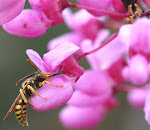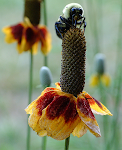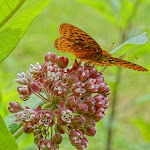Hello honeys, I went on line to research using essential oils (spearmint, lemongrass, thyme) to counter varroa mites and act as a feeding stimulant for bees. I was impressed at how expensive the commercially available products are. I looked further and found a recipe from another beekeeper in a blog called "Bee Source" .
I made it last year and was really pleased at the results - the bees definitely get excited by the aroma. In fact, while I was making it they pressed in droves against my open kitchen window screens - so when it says it "not be left open around bees" take it seriously!
Here it is:
5 cups water
2 ½ pounds of sugar
1/8 teaspoon lecithin granules (used as an emulsifier)
15 drops spearmint oil
15 drops lemongrass oil
Bring the water to a boil and integrate the sugar until dissolved. Once the sugar is dissolved remove the mixture from the heat and quickly add the lecithin and the essential oils. Stir until everything is evenly distributed. This solution should have a strong scent and not be left open around bees. Cool before using.
Cool side benefit - put it in a spray bottle and spritz it instead of using smoke to calm the bees! I have worked my hives just using this and everyone was fat and happy.
Beekeeping Tips On Fixing A Queenless Hive
2 months ago




